AFT Blog
The Itaipu Dam vs. the Hoover Dam is No Contest: Itaipu Wins By a Landslide
Unknown to me, a few weeks ago I was sitting across from a Brazilian hydroelectric engineer on an airplane flying across Brazil. His name was Roberto and he did not speak English. I myself was learning the basic Portuguese phrases but that was the extent of my language skills. I was traveling with my son (an engineering student himself) who was spending the southern winter (i.e., northern summer) working in São Paulo, Brazil. My son had learned to speak Portuguese amazingly well and struck up a conversation with Roberto. That was when he found out Roberto was a civil engineer who used to work in hydroelectric power.
I have to confess that until that day a few weeks ago I had never heard of the Itaipu Dam - the largest hydroelectric facility in the Americas and, until a few years ago, the largest in the world. Roberto and his family were planning to tour the dam as part of their trip to the area where the borders of Brazil, Paraguay and Argentina meet. When we landed my son and I hatched the idea to rent a car and see if we could get in on a dam tour ourselves.
The reason we were traveling to the area is a story for another day, but in short we were there to visit the largest waterfall system in the world - the indescribable Iguazu Falls (Iguaçu in Portuguese and Iguazú in Spanish). The Falls are on the Iguazu River which is near the Paraná River where the Itaipu dam was built. See below a map of where the dam is located.
Location of Itaipu hydroelectric facility in South America on the border of Brazil and Paraguay on the Paraná River 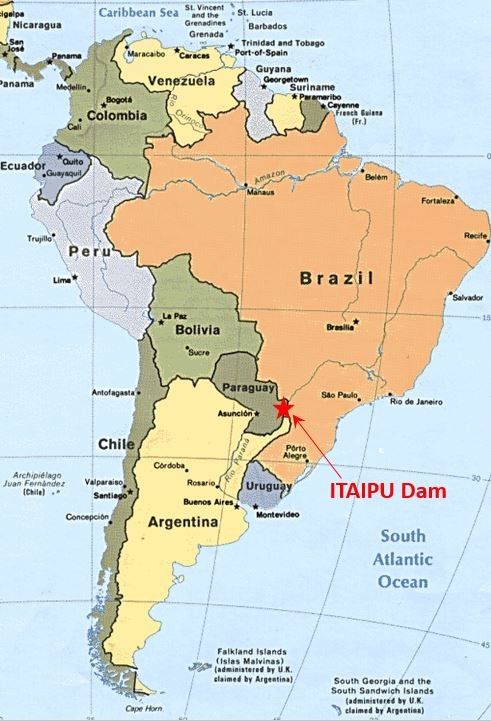
We drove over to the dam and made it into the last English speaking tour of the day by 5 minutes! A year ago I visited the Hoover Dam for the first time and wrote about it here. But by just about any measure, the Itaipu Dam beats the Hoover Dam.
Let's get the engineering details out of the way and then I will discuss the tour. The Itaipu Dam generates a maximum of 14,000 MW of power (the equivalent of 10-15 nuclear power plants). This is 7 times the generating capacity of the Hoover Dam. In year 2016 Itaipu generated 103 TW-hr of energy. This is 25-30 times what the Hoover Dam generates each year (3.6 TW-hr in year 2015).
The Itaipu Dam started generating power in 1983. It was the largest hydroelectric facility in the world until 2012 when the Three Gorges Dam in China came online. The Three Gorges Dam can generate about 50% more power at peak operation (22,500 MW). However, in 2016 Itaipu generated more energy over the year to set the world record.
One of the many fascinating things about Itaipu is that it generates power at both 50 Hz and 60 Hz. Brazil follows the American standard of 60 Hz power while Paraguay follows the European standard of 50 Hz. Itaipu has 20 turbines and each country has rights to 10 of the turbines. Paraguay is a much smaller country than Brazil and the tour guide told us that Paraguay's share of Itaipu power provides enough power for 80% of Paraguay's needs. Because Paraguay has other power sources, they sell over half of their share of Itaipu's power back to Brazil. This power needs to be converted from 50 Hz to 60 Hz for Brazil, and altogether Itaipu provides 7% of Brazil's power needs.
This is the first engineering tour I have been on with my son since he started engineering school. He is a senior and thus we could talk about all the engineering details of the stresses on the dam, the function of the penstocks, the internals of the turbine and the nature of the power generation. That was pretty cool.
Below are some of the photos I took at Itaipu last month. Overall we thought the dam tour was really good. If you are ever in the area, I highly recommend it!
The Itaipu Dam - the 20 penstocks are the white pipes running vertically along the dam, and the water discharging into the river is cooling water from the turbine assemblies
The view from the top of Itaipu Dam - this is above the central building seen in the previous photo near the tower at the top
Row of 10 meter (33 ft) diameter penstocks which feed the turbines below
Me in front of one of the 10 m (33 ft) penstocks
My photo of a large wall picture on display at Itaipu Dam showing when they installed one of the 8.6 meter (28 ft) diameter Francis turbines in 1982
A 3.8 meter (12.5 ft) diameter turbine shaft we saw on the tour, rotating at 90-93 RPM
The Dispatch Room which coordinates with the power grid. This day they were operating 16 of the 20 turbines and generating 8,848 MW of power (see at top). Note the 50 Hz and 60 Hz readouts at the right in both Spanish (top right) for Paraguay and Portuguese (lower right) for Brazil.
A wider view photo of the Dispatch Room



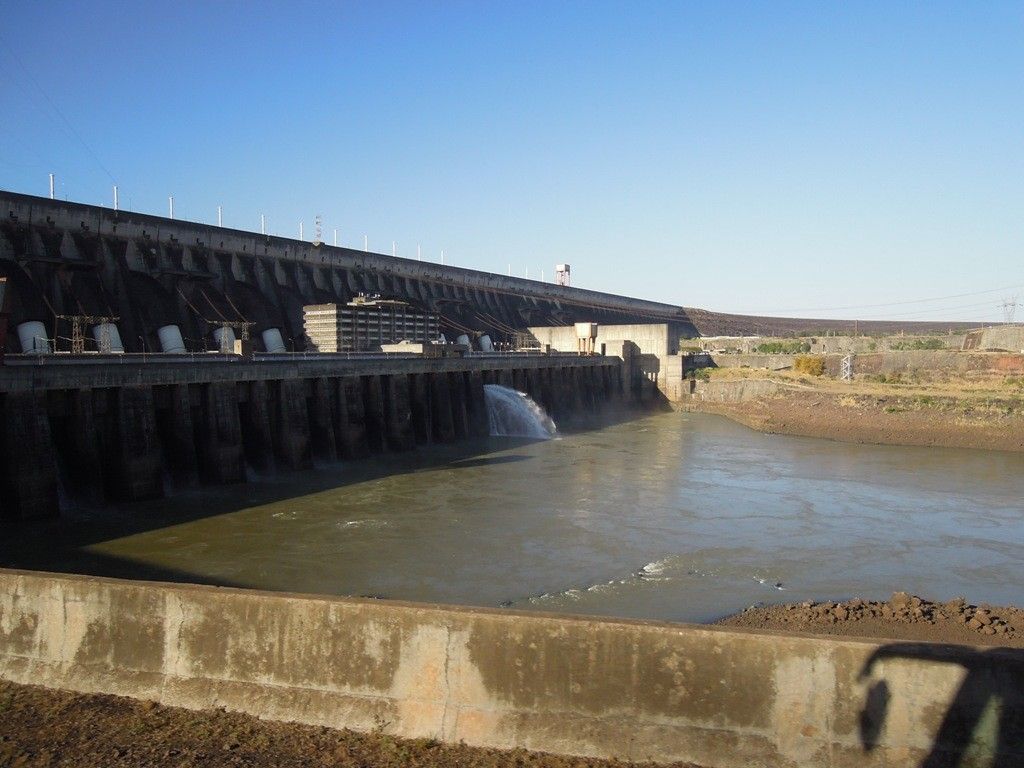
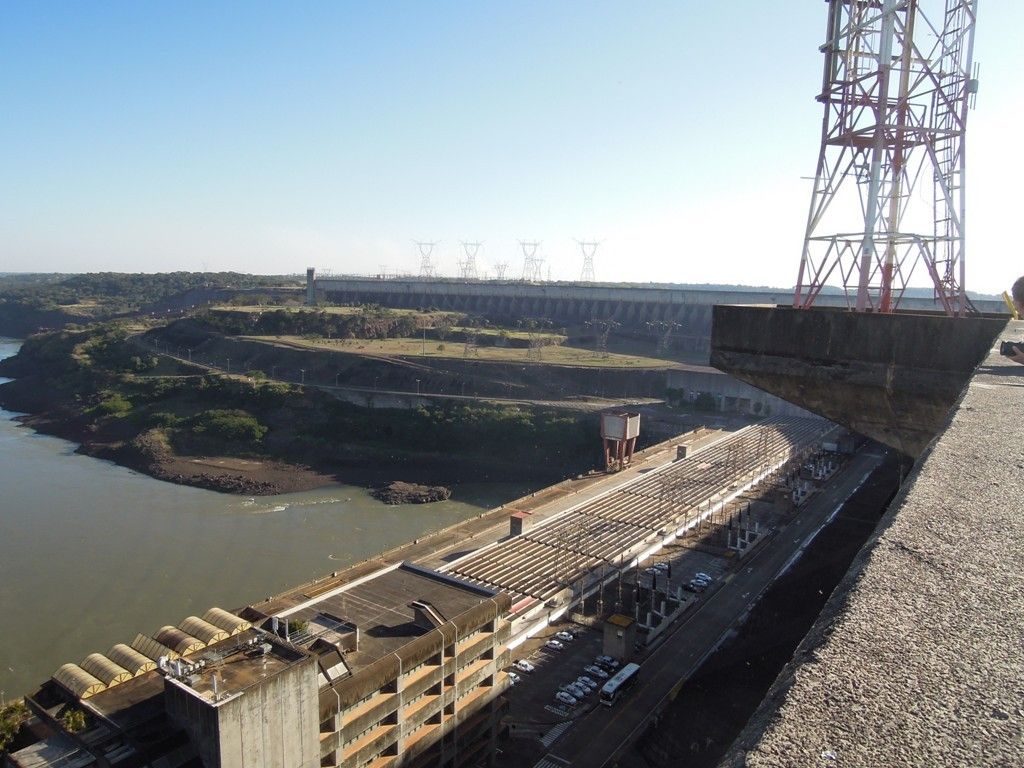
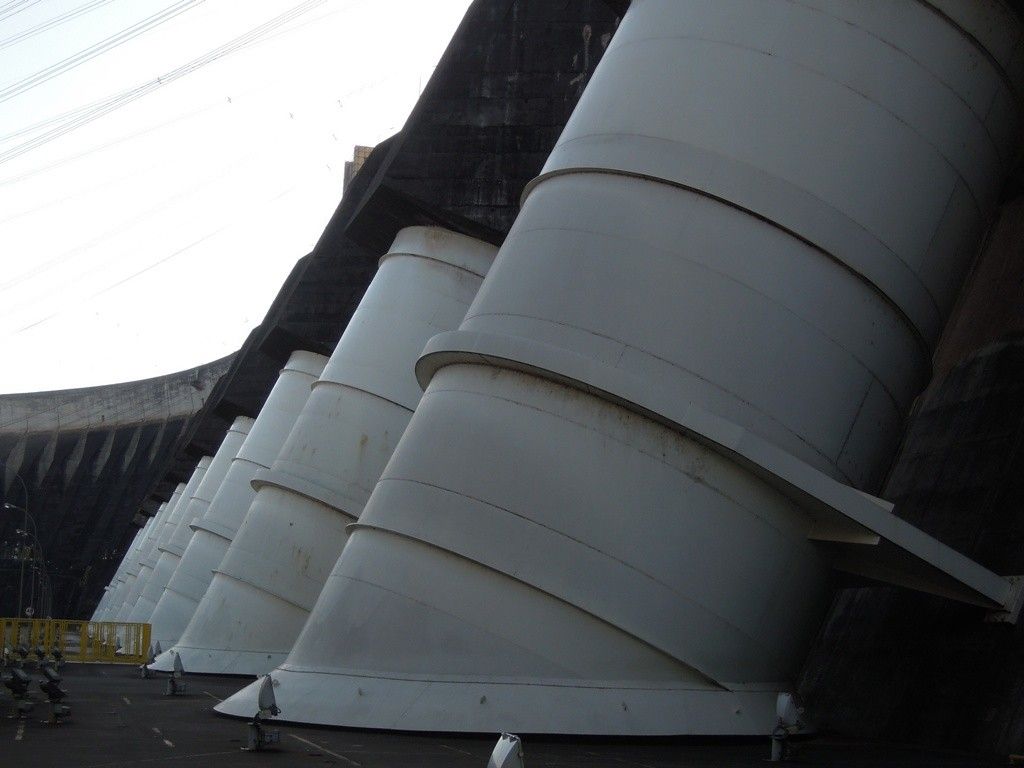
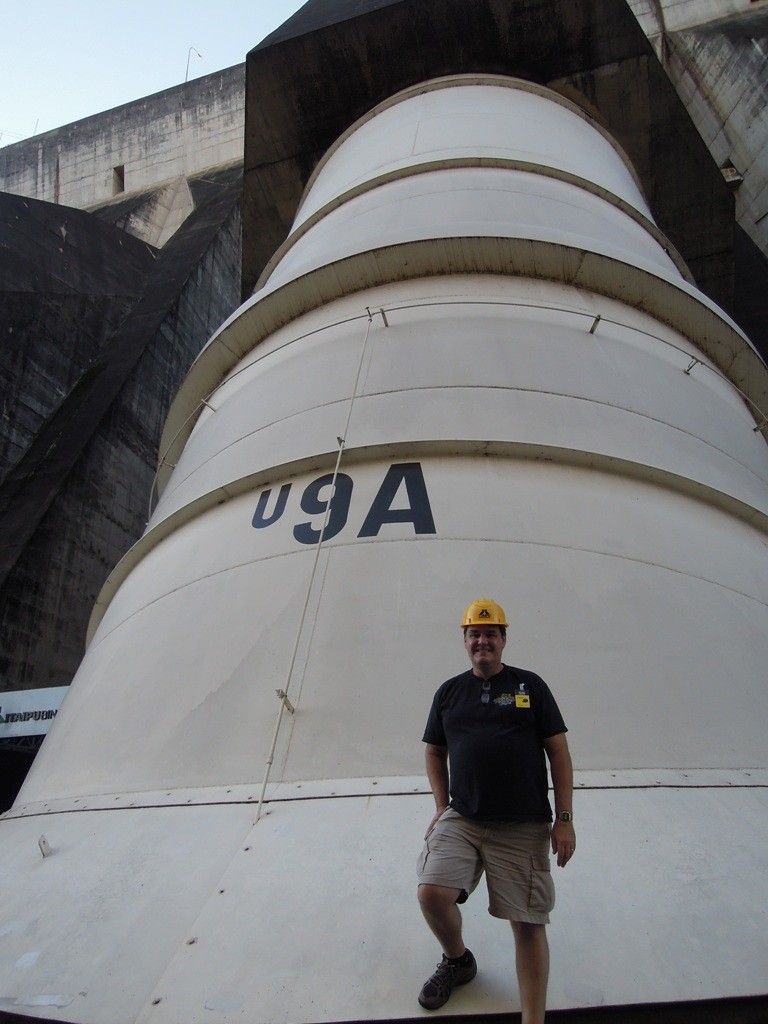
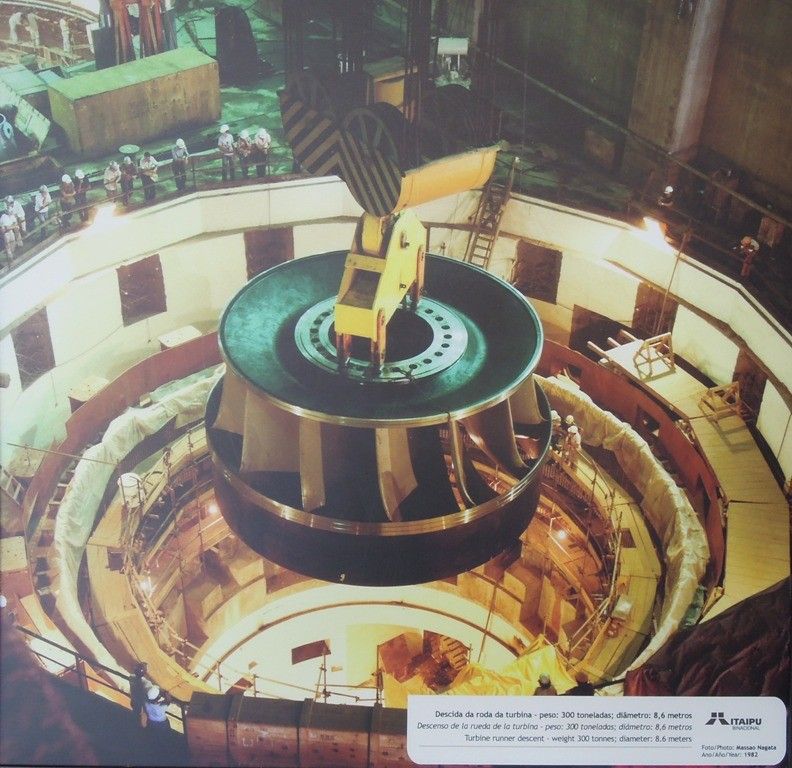
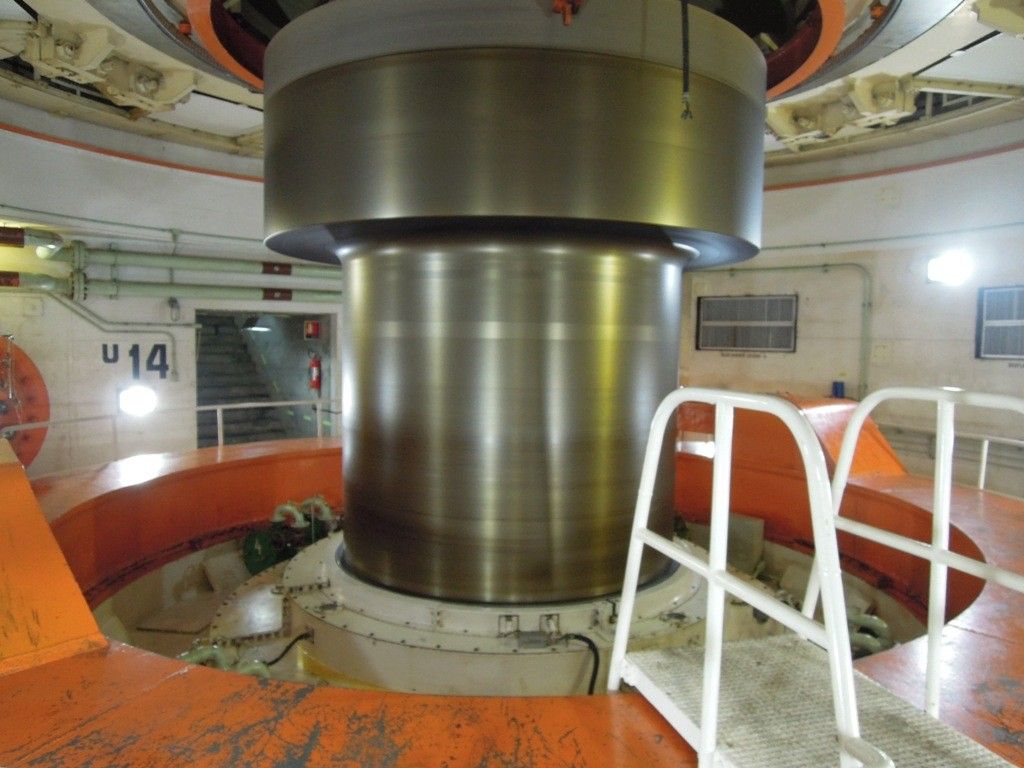


Comments 1
Hi,
What a great travel you made, it remembers me my own trip to the Itaipu dam with father, as he is an engineer and I am studying civil engineering too. It was an impressive construction and the tour was really well made.
Now we are planing to visit the Hoover dam, we hope to do it on this summer (U.S.A winter).
Greetings form Chile
P.D. You got some great photos.